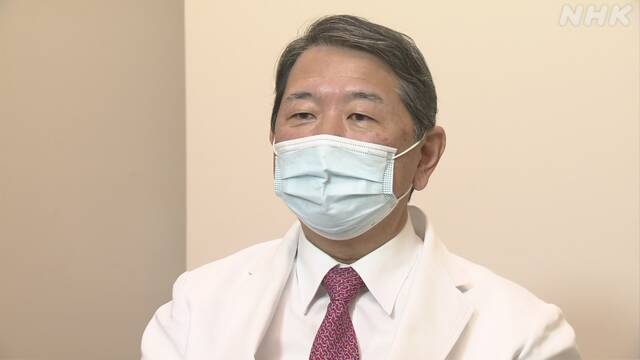As emergency medical care becomes tight due to the spread of the new coronavirus infection, there are a number of cases in which patients in urgent need of treatment cannot receive immediate treatment.
At hospitals in Tokyo that specialize in the treatment of the heart, there are conspicuous cases where patients are brought in from afar, saying, "If nothing is done, the timing of treatment may be missed."
The Fire and Disaster Management Agency of the Ministry of Internal Affairs and Communications considers cases where the patient has been referred to the hospital four or more times before the destination is decided as "a case where transportation is difficult".
At Sakakibara Memorial Hospital, which specializes in the treatment of the heart and aorta in Fuchu City, Tokyo, these patients have been brought in one after another since last month when the infection with the new coronavirus spread.
On the 24th of last month, patients with acute myocardial infarction, which is often seen in winter, and who are said to have a higher survival rate if catheter treatment is performed within 2 hours after the onset, are transported from Machida City, Tokyo, about 20 km away, over 1 hour and 45 minutes. It means that the treatment was somehow in time.
On the 22nd of last month, a patient who had a sudden occlusion of a large artery and could die in a few hours was refused acceptance by seven hospitals, about 70 kilometers away. It was brought in from Yamanashi prefecture for almost two hours.
Since the beginning of this month, multiple patients who are also difficult to find a destination have been brought in every day, and the ambulance crew has been unable to find a place to accept patients with both heart failure and pneumonia. In some cases, he was refused by making a phone call and arrived at this hospital.
The maximum number of beds that can accept inpatients is 260 due to the placement of medical staff, but as of the evening of the 14th, 95% (247 people) have already been filled, so we will accept it as it is. There is a risk that you will have to decline.
Dr. Mitsuaki Isobe said, "It took more than 3 hours for a patient with acute myocardial infarction to be transported in January last year, and although I was able to save my life, I missed the timing of catheter treatment and recovery was not sufficient. There were cases. I feel that emergency medical care is an order of magnitude tighter than in the 5th wave so far. In some cases, the timing of treatment may be missed. " I'm letting you.
On top of that, "We will do our best to deal with it, but I think that the situation will not improve unless we consider the division of functions for each hospital in the hospital network. Also, since it takes time to transport, heart disease will occur. Some people do not refrain from seeing a doctor even if they have a corona illness, and I want them to be careful and see a medical institution immediately if they have any symptoms. "
"Difficult to transport cases" is the highest ever for 5 consecutive weeks
As the infection of the new coronavirus spreads, the number of “difficult-to-transport cases” in which the recipients of emergency patients cannot be determined immediately has reached a record high of more than 5,700 for the fifth consecutive week, and is still on the rise.
The Fire and Disaster Management Agency of the Ministry of Internal Affairs and Communications reports on 52 fire departments nationwide, including the fire department where the prefectural office is located, as "cases where transportation is difficult", such as cases where there were four or more inquiries to the hospital before the destination of the patient was decided. Based on this, it is summarized every week.
In the week up to the 13th, there were 5740 cases, an increase from the record high of 5469 cases in the previous week.
By region, there were 2662 cases in Tokyo, 588 cases in Osaka City, 409 cases in Yokohama City, 207 cases in Nagoya City, 166 cases in Sapporo City, 109 cases in Fukuoka City, etc. The increasing trend has not stopped.
Compared to the same period before the spread of the new coronavirus, Nagoya city was 19.7 times, Fukuoka city was 12.63 times, Yokohama city was 4.84 times, Tokyo was 4.44 times, Osaka city was 2.63 times, and Sapporo city was 2.13 times. And it is increasing significantly in various places.
The number of suspected cases of coronavirus infection is 2067, which is the highest number so far, accounting for 36% of the total.
The number of cases without suspicion of infection with the new coronavirus is still high at 3673, accounting for 64% of the total.
The Fire and Disaster Management Agency of the Ministry of Internal Affairs and Communications said, "It is still on the rise and the difficult situation continues. The future outlook is uncertain, and we are watching the future trends with a sense of crisis."

